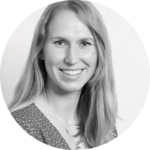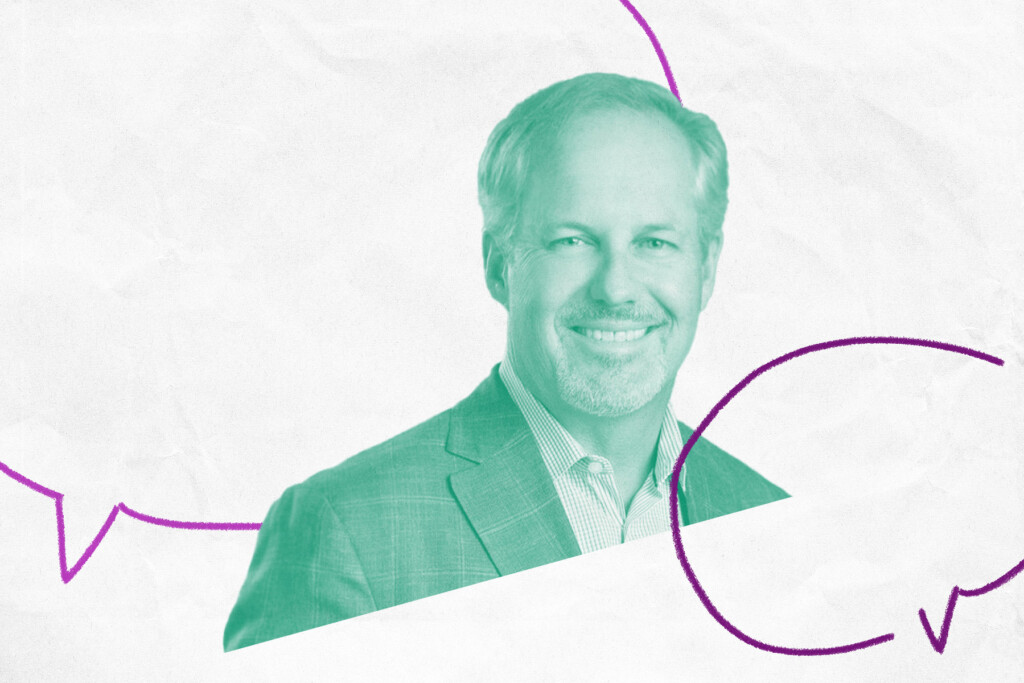As CEO, Charlie Morrison guided Addison-based Wingstop through more than a decade of growth, growing the franchise chain from 500 to 1,800 units and navigating it through the pandemic. Earlier this year, he announced his resignation and move to lead Salad and Go—a healthy, drive-thru-only restaurant chain that had only 60 locations at the time. With the move, Morrison opened an Addison office for the company, where he will be based.
“It’s going to build this brand for the future,” Morrison says of the new space.
Morrison also recently announced his aggressive growth plan in North Texas, with plans to open seven Salad and Go locations in the region this month alone: two in Frisco, one in Fort Worth, one in Burleson, one in Cross Roads, one in Mesquite, and one in Prosper.
Here, he shares why he chose to invest in the budding Salad and Go brand, his vision for the company, and more.
D CEO: How did you make the decision to leave Wingstop and join Salad and Go?
MORRISON: “I had a great career there, and nothing was wrong. About 20 months ago or so, I joined the board of Salad and Go and was recruited to do that. I got to know the company very well over that timeframe. As the brand was growing and developing, we knew there was a need for a new CEO to help scale growth and build it up.
“As we were looking around and starting our search, I reflected on the great success that I had had at Wingstop, but also the unique nature of this brand and what it was all about, which really is tied to our mission of making fresh and nutritious food convenient and affordable for all. It really resonated and connected with me. So, I threw my hat in the ring.
“To grow and expand another company in my career, as I get older, was an opportunity I just felt like I had [to pursue]. They said yes. So, here I am, and I’m excited about the opportunities ahead.”
D CEO: Why is DFW the right spot for growth—and these seven new locations?
MORRISON: “It’s our goal to put locations all over the United States, ultimately. Phoenix was our original market, and we have been expanding within Phoenix, as well as into other markets here soon, such as Las Vegas and others.
“Dallas is a great market for restaurants, as we know. It always has been. It’s a great economy here in Texas at large, especially in Dallas, and the large population with the consumer spending patterns that we see really makes it attractive for us to put these locations here and really grow the business.
“It’s also a great place for us to anchor one of our food manufacturing facilities. We have a small one today down in South Dallas, but we’ll be building, over the course of the next eight months, a scaled, 100,000 square-foot-plus processing plant that will serve as many as 400 locations throughout the greater Texas area, as well as in Oklahoma and surrounding states.
D CEO: What about Salad and Go’s production and product is unique?
MORRISON: “We’re a vertically integrated brand. We start straight from the grower, and we bring our produce in and we cut it, wash it, process it, and get it prepared for our stores. When they get to the stores, it’s all about assembling the salads to order for our customers. So, it’s a disruptive approach to how restaurants work, typically. By owning our own supply chain, we maintain a lot of control, but we also take a lot of costs out of the equation, and we return that back to our customers in the form of a great value for our salads.
“[Our Michelin Star chef] is Daniel Patino, and he is a co-founder of the company. He’s been with us since the very beginning and has perfected all the recipes that go into the making of not only the salads, but the dressings.
“What I love about it is that he’s able to bring really unique flavors that you would expect to see in very fine dining into a quick-service restaurant setting by way of how we develop and manufacture. Although it seems unheard of, it’s actually very doable. Everything that [Patino] does is very, very particular. The coffee beans that we use to steep our cold brew are hand selected; the romaine comes from dedicated fields that will only use certain growers to grow romaine lettuce; we cut corn straight off of the cob fresh and put it into our salads.
“Things like that really makes a difference in the quality and the credibility of our products. So, to have somebody with the depth of experience, culinary expertise that he has is a real advantage. Beyond that, he’s not only an investor, he helped build the brand from the very beginning. Very few quick-service restaurant chains have that. I think it puts us in a unique position—and a good one.”
D CEO: What has it been like leaving a franchise brand for an independent chain?
MORRISON: “There are pros and cons to each type of model. Franchisees ultimately are the ones who spend their capital for the investment. There’s a lot of work to make sure that you’re delivering to them a great model that’s efficient, and sometimes that can be a way to accelerate growth and spread out faster.
“A controlled model like ours is one we prefer for two reasons. No. 1: we can control the pace of expansion, and where we go, and it ties back to our production of food. The other is we love the economics of this brand and the results that we’ve seen so far, so we want to keep those closer.
“We believe the best way to grow this brand is to maintain that control, not only in terms of where we put the locations, but more important, around food quality, consistency, training—everything that goes with that. That makes this model, for us at least, a lot more attractive.”
D CEO: What has stopped other quick-service restaurants from using a similar model to Salad and Go?
MORRISON: “We are a capital-intensive [chain], so there’s a lot of investment to be made, and I think some organizations get nervous about making those capital investments. They may choose to franchise sooner, putting that investing on the backs of their franchisees.
“We’ve made a concerted effort to invest well ahead of the size of the business to make sure that we can scale and grow into that and do it right from the get-go. That takes a lot of courage and commitment and conviction from the team, and the board, and the owners. We are committed as such and so therefore, the fruits of our hard work and commitment in the near term will pay off in the long-term.
D CEO: Where does that investment come from for Salad and Go?
MORRISON: “It’s predominantly private equity-backed, with some angel investors, generally supported by large family offices.”
D CEO: How are you navigating the industry’s current staffing shortages?
MORRISON: “The way we’ve built our model is that our stores are only 700 square feet, which means you can’t put a lot of people in there to begin with. It’s designed for really high efficiency and low staff levels to run it.
“We can run a Salad and Go with as few as three people and at max maybe eight. Our roster sizes are quite small, so we’re able to still attract talent versus some other concepts. Even in the quick-service restaurant space that needs 50 or more people on their rosters, we need fewer than 20. I think that gives us a competitive advantage to be able to attract that talent. We also pay very competitive—if not above-market—wages. That’s part of having that efficient model of production; it allows us to pay a little bit more and get the best talent in the market.”
D CEO: What are your long-term plans for the company’s growth?
MORRISON: “By the end of this year, we’ll have about 90 locations between Phoenix and Dallas. By next year. We’ll more than double that—or at least double that—so, closer to 180. We expect that we’ll be building close to 100 stores a year after that, If things move the way we think they will.
“The way we approach our development is to [blanket] markets—go in and add a lot of stores in one market and aggressively expand there. That helps with the efficiency of our food production facilities and scale the business quickly. So, I would expect that will be [at 400 locations in the Southern U.S.] within a few years.
“I think the potential in this market would be somewhere around 150 locations, and over five years we hope to open as many of those in as we can.”
This conversation has been edited for clarity and brevity.
Get the D CEO Newsletter
Author



